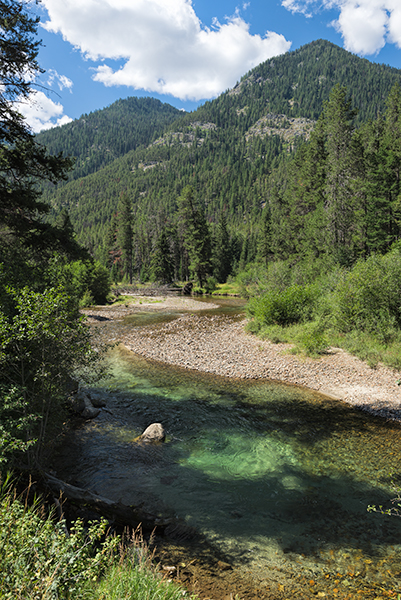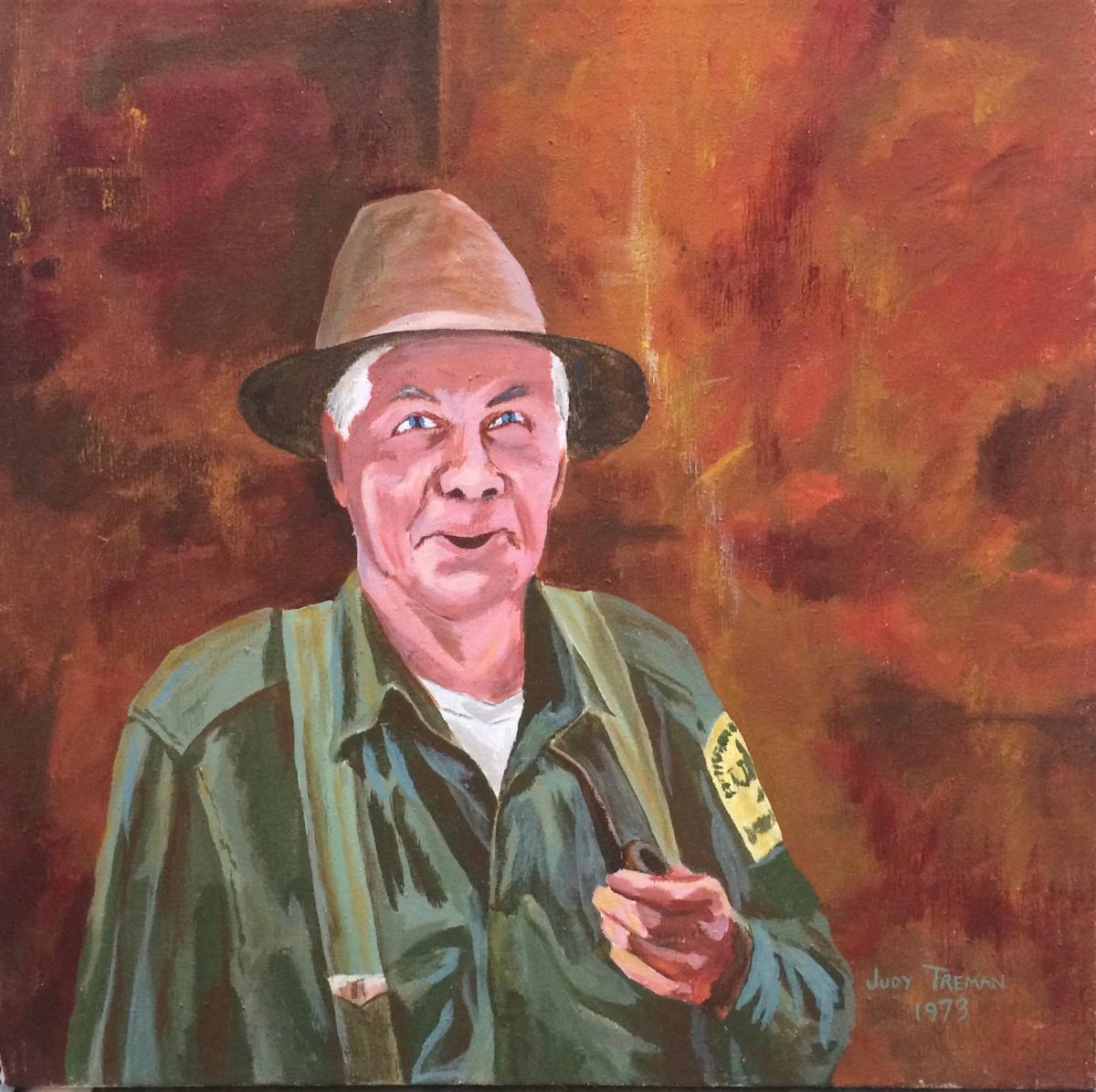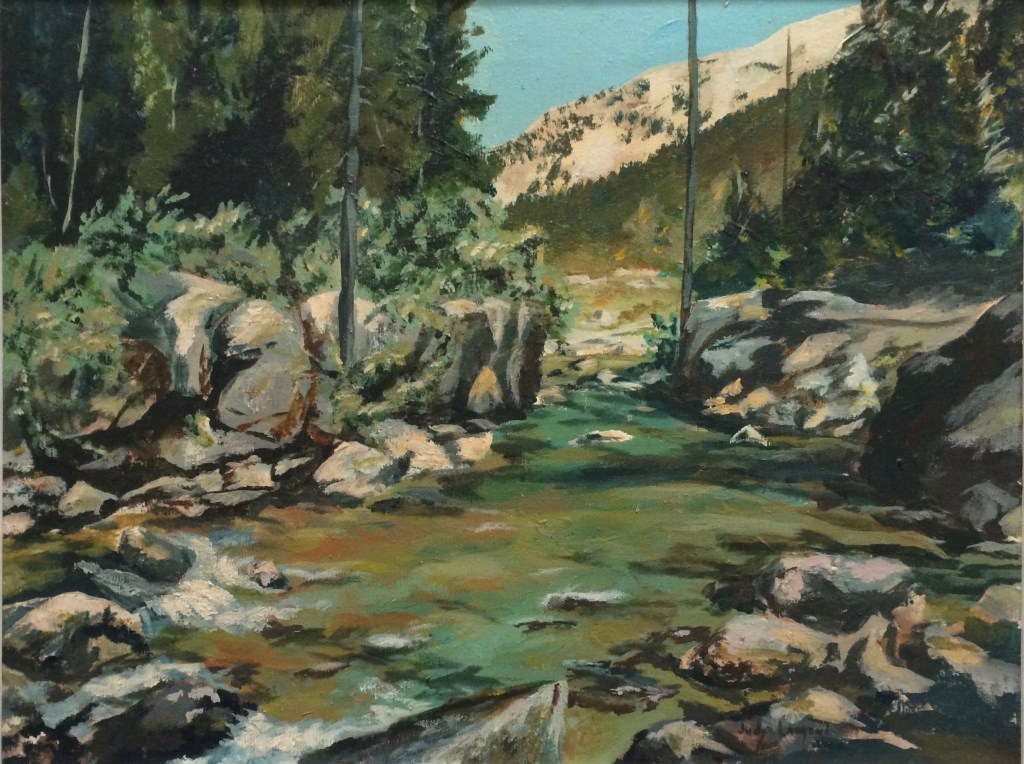|

Last year the Forest Service proposed an illegal logging project on one of Oregon’s most precious landscapes. In response Oregon Wild and Greater Hells Canyon Council took the agency to court. Judy Treman of Walla Walla, Washington has been visiting the Lostine River Canyon for over 70 years. When she heard about the logging project she wrote this piece:
I am reeling with shock that the Lostine River Canyon has been chosen by the Forest Service for logging! Logging trucks on the narrow Lostine road! How is this possible?
Consider the Loss to Human Enjoyment — Devastating to Me
I first visited the Lostine as a baby over 70 years ago. It was my family’s favorite vacation spot. Over the years, visiting nearly every summer, it became my spiritual home. At times it has helped me recover from illnesses. During my lifetime I have personally witnessed the growth of trees and changing maturation of the forest!
When I was in high school, my sister, Jill, and I explored every nook and cranny in our wanderings during our yearly month-long visit. I have met scores of people who have fallen under the spell of the Lostine Valley, as I have.
All of the following people would turn in their graves to hear about the proposed logging:
-
Supreme Court Justice William O. Douglas (whose book Of Men and Mountains was my bible and who championed the Lostine) is at the top of the list. Douglas’ friend Roy Shaeffer who owned Lapover Ranch is right there with him.
-
 Crawford “Crawfy” (“The Lostine Guard” forest ranger extraordinaire at the Lostine for many years in the ‘60s) was a special mentor for many years and protector of the Lostine. Hunter Falls near Lake Creek was named for him. He and his wife Ethel watched over my sister and me and taught us about the land, wildlife, and how to camp and where to find huckleberries.
Crawford “Crawfy” (“The Lostine Guard” forest ranger extraordinaire at the Lostine for many years in the ‘60s) was a special mentor for many years and protector of the Lostine. Hunter Falls near Lake Creek was named for him. He and his wife Ethel watched over my sister and me and taught us about the land, wildlife, and how to camp and where to find huckleberries.
-
Herman Steiger, family friend, herded sheep in the early 1900’s in the valley and cherished his summer Lostine visits well into his 70’s. He shared his history of shepherds carrying fish to high lakes on pack horses.
- Hobart Landreth, a college professor from Oklahoma who spent a summer with his family studying a species of Ascaphus truei frogs found few places in the world.
The list also includes my parents, grandparents, aunts and uncles, cousins, friends of parents and grandparents.
What is immeasurable to me is the time I have spent in various ways enjoying the Lostine. As a child fishing a deep hole in the river upstream from Shady Campground, and finally landing a 20” bull trout. Wading the icy cold river. Wandering in the canyon off the trail, intrepidly exploring.
Sitting on the river rocks painting the colors of the river, trees and mountains—so much better than any photo could capture. Exploring the riverbank, crawling through overhanging bushes studying moss and lichens.
Introducing camping to a Japanese family who had never experienced sleeping in a tent, marshmallows around a campfire, pancakes cooked over the fire, stars in the night sky. Watching beaver swim the river at dusk. Lying in a hammock mesmerized by tall trees swaying in the breeze. The power of a salmon leaping upstream.
Seeing a Golden Eagle take flight.
So many families still camp in the Lostine as we did. I mourn the thought that logging would deny future enjoyment of this one-of-kind area to families and their children and grandchildren. The loss to me is staggering.
Consider the Environmental Loss—No Net Benefit and Huge Loss
 Logging the Lostine Corridor would have a devastating impact on this bountiful natural ecosystem—the animals, birds, trees and flowers. But most of all it would destroy the pristine river. The trees protect the river.
Logging the Lostine Corridor would have a devastating impact on this bountiful natural ecosystem—the animals, birds, trees and flowers. But most of all it would destroy the pristine river. The trees protect the river.
Without the trees runoff would taint the river. Logging would drastically scar the land. Flora and fauna ecosystems would be irretrievably destroyed. The river would lose its health and beauty.
The pristine river and valley support a wealth of wildlife. In the Lostine corridor I have personally discovered: spawning salmon returning from the ocean, Dolly Vardon, Eastern Brook and Rainbow trout, deer, elk, brown bear, badger, beaver, mountain sheep, squirrels, chipmunks, jumping-mice AND Ascaphus truei - a small frog that lives in clear, cold mountain streams.
Some of the birds I have enjoyed are: White-headed Woodpecker, Boreal Owl, Bald Eagle, Golden Eagle, Red-tailed Hawk, Red Crossbill, Steller’s Jay, Gray Jay, Northern Flicker, American Robin, Belted Kingfisher, American Dipper, Yellow-rumped Warbler, Red-breasted Nuthatch, Ruby- crowned Kinglet, Dark-eyed Junco, Brown Creeper, Mountain Chickadee, Wild Turkey, Ruffed Grouse, Spruce Grouse.
I have studied the flowers and trees, especially: Indian Paintbrush, Blue Gentian, Pink Monkeyflowers, Elephant-heads, Pinedrop Orchids, tamarack, fir, pine, and monumental cottonwoods.
The Costs
In researching timber sales in national forests, I found a summary of the many problems of timber sales in national forests:
- No net benefit and huge loss of habitat and clean water.
- Net money loss and increased cost to taxpayers
- Forest destruction based on the pretext of reducing fire threats instead of managing defensible space.
“National forests provide a wide variety of benefits. The headwaters of many rivers are located in national forests and so these forests are an essential source of clean water. National forests also home to wide variety of remarkable animals and plants, including species that depend on old- growth forests—which have largely been cut down in the areas outside of public lands. And national forests provide many favorite places for recreation. But all of these benefits are harmed by one activity— commercial logging on national forests through the Forest Service’s timber sale program, in which private timber companies pay the Forest Service to be allowed to cut down trees on public land.
“However, the Forest Service spends so much money preparing these timber sales, such as through road-building and trying to repair some of the ecological damage after logging, that the Forest Service’s timber sale program is a net money loser, costing taxpayers hundreds of millions of dollars per year. In other words, the timber sales program functions as a particularly destructive form of government subsidy to private logging companies. This subsidy is so large that if the government ended the Forest Service timber sales program, a portion of the money saved could be used employ every timber worker that is currently involved in cutting down national forests to instead work on ecological restoration, repairing the damage that has been done to our forests, and there would still be millions of dollars remaining in taxpayers savings. At the same time, less than four percent of U.S. wood supply comes from our national forests, a tiny fraction that could easily be replaced through a bit more recycling or a little less waste.
“So commercial logging of our national forests is not only ecological damaging and economically wasteful, it is also unnecessary. Although the Forest Service’s timber sale program is a net money loser, individual Forest Service districts are rewarded financially for completing timber sales. At the same time, the logging companies profit from taxpayer-subsidized, below-cost timber through those sales. So both the Forest Service and logging companies have a strong incentive to push for more commercial logging on national forests, even when the effect of that logging is quite harmful to our public lands.
“Fortunately, the environmental laws protecting our national forests were specifically written to include provisions for public oversight in the management of these lands and “citizen-suit” provisions that allow members of the public to file litigation to ask the federal courts to intervene when the Forest Service does not obey these laws.
“Efforts by logging proponents to promote more taxpayer-subsidized timber sales out in wildlands far away from communities under the pretext of reducing fire can not only cause ecological damage, but can also distract resources and attention away from managing the defensible space zone that will actually keep homes safe.” (source)
###
Image Credits:
- Lostine River photo courtesy Leon Werdinger
- Oil Painting of Crawford L. Hunter "The Lostine Guard" Copyright 1973 by Judy D. Treman
- Oil Painting "Lostine River from Shady Campground" painted on site Copyright 1966 by Judy D. Treman
Photo Credits
Lostine River photo courtesy Leon Werdinger
Oil Painting of Crawford L. Hunter "The Lostine Guard" Copyright 1973 by Judy D. Treman
Oil Painting "Lostine River from Shady Campground" painted on site Copyright 1966 by Judy D. Treman
Oil Painting of Crawford L. Hunter "The Lostine Guard" Copyright 1973 by Judy D. Treman
Oil Painting "Lostine River from Shady Campground" painted on site Copyright 1966 by Judy D. Treman
 '
'
